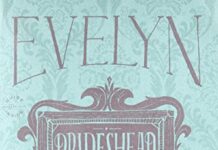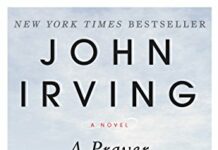
Ebook Info
- Published: 1999
- Number of pages: 434 pages
- Format: Epub
- File Size: 0.55 MB
- Authors: Arthur Golden
Description
Speaking to us with the wisdom of age and in a voice at once haunting and startlingly immediate, Nitta Sayuri tells the story of her life as a geisha. It begins in a poor fishing village in 1929, when, as a nine-year-old girl with unusual blue-gray eyes, she is taken from her home and sold into slavery to a renowned geisha house. We witness her transformation as she learns the rigorous arts of the geisha: dance and music; wearing kimono, elaborate makeup, and hair; pouring sake to reveal just a touch of inner wrist; competing with a jealous rival for men’s solicitude and the money that goes with it.
In Memoirs of a Geisha, we enter a world where appearances are paramount; where a girl’s virginity is auctioned to the highest bidder; where women are trained to beguile the most powerful men; and where love is scorned as illusion. It is a unique and triumphant work of fiction—at once romantic, erotic, suspenseful—and completely unforgettable.
User’s Reviews
Review “Astonishing . . . breathtaking . . . You are seduced completely.” —Washington Post Book World”Captivating, minutely imagined . . . a novel that refuses to stay shut.” —Newsweek”A story with the social vibrancy and narrative sweep of a much-loved 19th century bildungsroman. . . . This is a high-wire act. . . . Rarely has a world so closed and foreign been evoked with such natural assurance.” —The New Yorker From the Inside Flap A literary sensation and runaway bestseller, this brilliant debut novel tells with seamless authenticity and exquisite lyricism the true confessions of one of Japan’s most celebrated geisha.Speaking to us with the wisdom of age and in a voice at once haunting and startlingly immediate, Nitta Sayuri tells the story of her life as a geisha. It begins in a poor fishing village in 1929, when, as a nine-year-old girl with unusual blue-gray eyes, she is taken from her home and sold into slavery to a renowned geisha house. We witness her transformation as she learns the rigorous arts of the geisha: dance and music; wearing kimono, elaborate makeup, and hair; pouring sake to reveal just a touch of inner wrist; competing with a jealous rival for men’s solicitude and the money that goes with it. In Memoirs of a Geisha, we enter a world where appearances are paramount; where a girl’s virginity is auctioned to the highest bidder; where women are trained to beguile the most powerful men; and where love is scorned as illusion. It is a unique and triumphant work of fiction?at once romantic, erotic, suspenseful?and completely unforgettable.
Reviews from Amazon users, collected at the time the book is getting published on UniedVRG. It can be related to shiping or paper quality instead of the book content:
⭐ To be fair, this is a work of fiction, and should be treated as such.However. This book was written by a white, western male who tries to pass himself off as a Japanese woman, and it shows.Reading this book left me with the impression that the author has yet to meet a bad alliteration, metaphor and/or trope that he cannot use and abuse in some way, a philosophy that he should seriously reconsider. The book is full of them, which makes it a hard read.There are several flaws inherent in the book, starting with his overly done portrayal of the villain Hatsumomo, you never quite understand why she hates Sayuri so much, or why she is such a bitch. Some small redeeming quality would have added much to both Hatsumomo and the book!Mameha is flat and one dimensional, as is the Chairman. Nobu-san, the anti-hero was the only one who had a flicker of personality, which was quickly snuffed out by bad writing. Pumpkin, Mother, and Auntie may as well have been written out, as he does little to develop them,despite them being an important part or Sayuri’s life.There are many, many inaccuracies about Geisha culture as a whole, and geisha in particular in the book and instead of making some effort to address them, the author chooses to repeat them, ad nauseum.If you can overlook all of the negatives, it isn’t an absolutely terrible read. But, it will never be one of my favorites.For me, the whole thing was stale and flat while the the author comes across as an arrogant, sexually obsessed dilettante. It’s hard to believe that he has degrees in Japanese culture, as he acts more like a stereotypical westerner and a culture vulture.The fact that he quickly and publicly sold out one of his sources (for which he was sued) does him no favors as a person. The only reason he got as much press as he did was because he used his family connections with the publishers of the Times.If you want a GOOD, WELL WRITTEN, AND ACCURATE book on Geisha and Geisha culture, stay away from this culture vulture and read Liza Dalby or Mineko Iwasaki, or pretty much any other writer but this one.
⭐ No, really, it is. I will read this book nearly every year for the rest of my life.The story of Saiyuri is a very detailed one, and how she came to be a geisha. The (fictional) biographical novel of a geisha is definitely a wonderful read. I love all things Japanese, and this book is a great insight into the world, as it is well researched and well written. In some places it is like a story, and in others it is like reading an encyclopedia of Japanese culture, and the two mix so well together that it is almost unnoticeable. The characters are believable, and each ones follows their path in life and you know where most of them land. That is definitely good story-telling.Moreover, the book is also going to draw you into a life story you will want to know about, even if you saw the movie first (like me). believe me, the movie has nothing on the book. It only gives you a visual for what the world looks like. The true depth of the book is much deeper, stronger and more drawn out in a way that the reader will find most enjoyable.
⭐ When this was published a decade ago, it sounded like an account I wouldn’t find compelling. But as a fan of historical fiction, and an admirer of many Asian cultures I decided to wade into the book after hearing how it appealed to both genders, though strangely it was written by a male who was also not Japanese. It is written in a very soft motif with gentle mental imagery. But it also detailed a belief system that was reality but no less perverse in marginalizing women and condoning extreme selfishness, unfaithfulness in marital vows, and an assumed right of wealthy males to pander and drink in youth and beauty though often having little to contribute but money. Men like the minister who was appointed to a key government position but had no hint of personality or clever intellect and is portrayed as crude as a box of hammers, yet was able to be entertained by attractive young women who poured his saki, pretended to find his company enjoyable and even led him to the bathroom whether to relieve himself or to vomit onto the garden from over drinking. Perhaps all cultures have variations of this geisha system, especially “Dana’s” who are presently called sugar daddys in contemporary parlance. The characters and portrayed system is a microcosm of the self serving and even crude brutality germaine to flawed humanity, but framed in artificial elegance and dressed is silk kimonos to dignify and justify it. Highly recommended, filled with picturesque life lessons in human nature, dreams of youth colored by naivety, manipulation and bullying to jockey for position, as well as reminding of the temporary nature of all things, but especially of youth, beauty, strength and position.
⭐ Unfortunately, I admit I haven’t read this book in twenty or so years and I imagined it reading the same. I couldn’t have been more wrong! It’s so much more heartbreaking, intriguing and entertaining than when I was younger. There was so much I thought I understood back then that now I appreciate.
⭐ Recently I watched the movie again, and then read about it, and was intrigued to read a man had written it AND it was his first book. So of course I had to Edward the book. It was even better than the movie. Interesting to me that the geishas voice changed, matured, even as she added years to her life. I was richly blessed by the reading of this book. Thank you, Mr. Golden, for writing it.
⭐ This was the first book selected by the book club I was invited to join at the start of the year. From the first page I was hooked on the beautiful evocative descriptions of people, places and situations. The story is essential the life story of a little girl from a poor fishing village in Japan who finds herself taken to the Trisha district known as Gion , where she overcomes loss of family and the loss of the life of her childhood, and learns the art of being a geisha. We hear the story from Sayuri at the age of 80 years or so, remembering her life and how she came to be where she is today.As I said the descriptions alone are enough to make this a worthwhile read. But the story itself is also full of schemes and intrigue, and shadowy unknown benefactors that influence the course of the protagonist’s life with small actions that have tremendous impact. It is also a story of true love, as well as a story about the strength and struggles of women in Japan . It allows the reader to become part of a different culture and way of being…and of appreciating that the two layers of Japanese culture: the surface story as illustrated by the beauty and grace of the geishas versus the broken, harsh, and grimy circumstances that produce the geishas. All of this combines to give a thoroughly absorbing reading experience that leaves one feeling a little richer inside for having completed the book.It was a great book to start off my year and I would recommend it to anyone interested in appreciating gender and culture issues from a different perspective., and to any reader who appreciates a well written tale.
⭐ It is certain that, over time, human beings have been busy repudiating and denying what is strange according to their own moral and cultural conventions. It is noticeable evidence when we analyze reports, articles, and more studies on various civilizations. It happened from where the observation starts, the feeling of strangeness occurs similarly.According to Roque de Barros Laraia, whose work I had the opportunity to read in law school and reread last year, ethnocentric behavior can also result in absurd and morally unacceptable cultural depreciation. It is natural for the human being – which does not mean that it is justifiable – to analyze the other from the navel’s perspective. There are plenty of examples in this regard: xenophobia, racism, homophobia, misogyny, and many other -isms.When this book and the film were released, there was a lot of controversy surrounding the Western imagination about Eastern culture as both productions supposedly embodied the stereotype of the perfect woman, an elegantly submissive work of art that moves and exists to make men feel important. Many standardizes pointed out at the time that such an approach was irresponsible and market-oriented, placing Asian culture under the ritualized cloak of the mysterious, exotic, and erotic.Controversies aside, the book brings an intelligent narrative that addresses a dispute for the title of the most beloved geisha and more socioeconomic advantages. It is important to remember that the book takes place in 1930 in the post-depression period when the world faced one of its most profound crises. It was common in Japan to sell mizuage (virginity) and get a generous Danna (exclusive customer). In this book, we have a duel between two powerful geishas: Mameha (curator of the young protagonist Sayuri) and Hatsumomo (the antagonist to be defeated).The reading is fluid and full of emotion, making it difficult not to be moved by the author’s refined writing about the young Sayuri who stars in the work. Sold by her parents as a slave in the poor village where she lived, Sayuri worked from an early age, and she studied to become a geisha in another city under the strict rules of the landlady who bought her. The movie undisclosed our hero living in peace in the United States, from where she fondly remembers her trajectory and a life together with the great love of her life.
⭐ This book contains a story that can be split into three parts. The first part is the story of young Chiyo, who is sold with her sister when their mother is too ill to care for them. Coming from a small fishing village, they are sent to Kyoto. Whereas Chiyo is seen with potential and educated as geisha, her sister is directly sold into prostitution. This part was really touching for me and made me think about the situation in my home country, where around the same time, children might also, if not sold, then at least be send to farmers, who had not enough children of their own to help them on their farms. Often, these children would be treated much worse than their own children. Both my grandfathers had to endure such a fate and one of them consequently never ate cheese, as this was all he was given to eat while there.The second part is then Chiyo’s education to be become a geisha. In order to do so, she has to get around Hashumomo, the senior geisha in her okiya. This has to be done with cunning and the way how Mameha can plot around the “evil stepsister” Hashumomo is like a heist story. This part is written humorously, but here, I could also understand why Japanese people will feel insulted by this book. On the one hand, the book says that geisha are no prostitutes, but then it goes on saying that the highest goal a geisha can achieve is a danna.The third part is then a cheesy love story, until Sayuri can finally be together with the man of her dreams. The conclusion of the story was so constructed that it made me happy when it was finally over. Nevertheless, this is an interesting read that I could finish within a week.
⭐ I’d hear so much of this book and in many bookshelves that I craved to read it. This book has an exciting start into the world of a Geisha (a concept I totally misconstrued) and what it must take to be forcefully introduced & endure its lifestyles. Towards the latter half our protagonist falls deeply in love with her accidental customer & keeps endlessly whining about the ‘ not so ‘ difficult choices she could have made to confess her love for him. This is a true story with epithets used to shield customers of the higher echelons in society from being discovered & yes, Sayuri may not have known of how to cut to the chase therefore receiving the benefit of the doubt that my disappointment isn’t truly justified. It’s a memoir after all – one’s journey with no add-ons.
⭐ Told in biographical form, Golden’s novel about the life of a geisha is just so gripping and heartbreaking. We follow a little girl named Chiyo, who’s from a poor ailing family in a poor village, and she and her sister Satsu are sold into the entertainment districts in Kyoto. There, they’re separated and Chiyo is brought a geisha boarding house with her new and strict caretakers. She begins her geisha training, and while she learns and grows, she finds it difficult to find her place as she contends with the house’s most admired geisha and if she’ll find happiness in her new life.A sad and emotional journey that felt like a Cinderella story without finding her prince. Chiyo’s story definitely has a harsh and struggling pull with a few minor antagonists and very few happy moments. Golden also an excellent job making the settings and background very surreal. Yet despite it all, her story is bittersweet and will have readers awed. *A (100%/Outstanding)*
Keywords
Free Download Memoirs of a Geisha: A Novel in Epub format
Memoirs of a Geisha: A Novel Epub Free Download
Download Memoirs of a Geisha: A Novel 1999 Epub Free
Memoirs of a Geisha: A Novel 1999 Epub Free Download
Download Memoirs of a Geisha: A Novel Epub
Free Download Ebook Memoirs of a Geisha: A Novel





